Mosses in woodlands
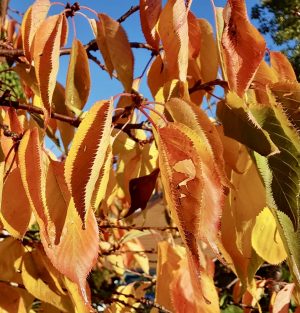
As we move through Autumn, the leaves of deciduous trees have ‘done their job’. Their capacity for photosynthesis dwindles (as does the light and temperature. In fact, the leaves become a ‘liability’ to a tree, in that they would make use of the reserves that have been stored away. Also, the leaves offer resistance to the winds of winter so a tree is likely to sustain damage. If branches are lost from the stem, then bacteria and / or fungi could enter. The leaves are ‘discarded’ as Autumn progresses. The green colour of the chlorophyll is lost and other colours emerge - reds, oranges and yellows. These colours are associated with different pigments, the carotenes, xanthophylls and the anthocyanins.
As the leaves are lost so the trunk and branches becomes more apparent, but they are not necessarily ‘naked’ - devoid of cover. Indeed, walking through a woodland at this time of year, one is often struck by the abundance of mosses. Tree trunks are often laden with ‘carpets’ of moss and their branches bear ‘decorations’ of many different mosses. Beneath the tree, there is often a soft, spongey layer of mosses.
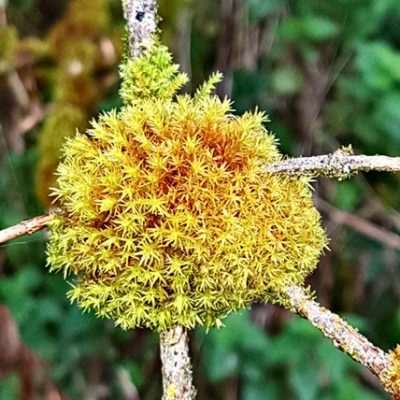 Mosses are bryophytes. They are ‘simple’, non-vascular plants ; that is to say they do not have sophisticated transporting tissues (of phloem and xylem). Nor do they have true roots, instead they have structures called rhizoids (which may be uni or multicellular). They live in moist places, indeed they are dependent on water for their reproduction. Mosses or rather their ancestors were some of the first plants to colonise land (which was the rather inhospitable rock of the Ordovician period), previously there were only algae in the seas.
Mosses are bryophytes. They are ‘simple’, non-vascular plants ; that is to say they do not have sophisticated transporting tissues (of phloem and xylem). Nor do they have true roots, instead they have structures called rhizoids (which may be uni or multicellular). They live in moist places, indeed they are dependent on water for their reproduction. Mosses or rather their ancestors were some of the first plants to colonise land (which was the rather inhospitable rock of the Ordovician period), previously there were only algae in the seas.
Mosses develop sex organs, The male organ is called is called an antheridium, it produces male gametes that can move by means of a flagellum. These gametes swim in a film of water towards the female organ (an archegonium). When the male and female gamete fuse, the structure grows to form a sporophyte. This eventually produces a capsule, which releases spores that grow on to form a new generation.
Mosses seldom grow to any great height, mainly due to the absence of supporting mechanical tissue but they can form extensive mats in damp, shady places (as can liverworts). These mossy mats can in some situations prevent soil erosion, and in others allow the accumulation of humus and soil enrichment / formation. 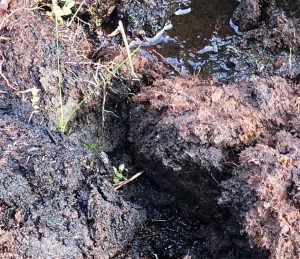 An extreme example of the accumulation of mossy material I can be seen in the case of the moss Sphagnum. Sphagnum is unusual in that can hold many times its own weight in water; because of this absorbency, Sphagnum was used as a wound dressing in WW1. It grows in acidic, marshy conditions, often forming a sphagnum bog. The low fertility and cool climate result in slow growth of the Sphagnum (and other plants). The decay of dead plant material is even slower (due low oxygen levels). Hence, peat forms and accumulates.
An extreme example of the accumulation of mossy material I can be seen in the case of the moss Sphagnum. Sphagnum is unusual in that can hold many times its own weight in water; because of this absorbency, Sphagnum was used as a wound dressing in WW1. It grows in acidic, marshy conditions, often forming a sphagnum bog. The low fertility and cool climate result in slow growth of the Sphagnum (and other plants). The decay of dead plant material is even slower (due low oxygen levels). Hence, peat forms and accumulates.
Large areas of the land can be covered to a depth of several metres with peat. Peat bogs are a very effective means of carbon sequestration, locking away carbon for hundreds iff not thousands of years. Unfortunately, many have been drained and allowed to dry out and / or the peat cut from them as a form of fuel. When peat areas are drained (channels are cut through the peat), they degrade and dry out. Then, they are then at risk of burning as has been seem in recent years -for example, in the U.K (Saddleworth Moor).
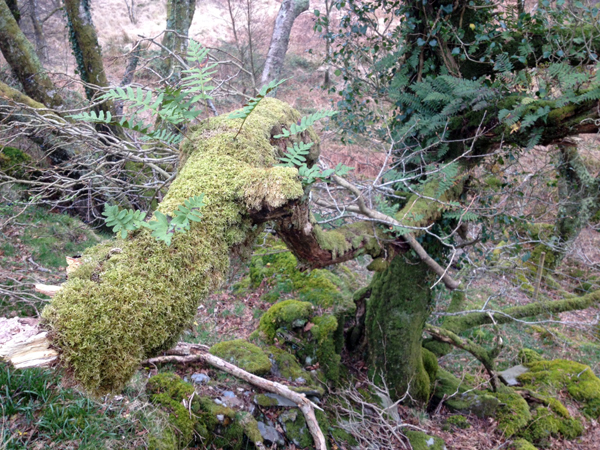
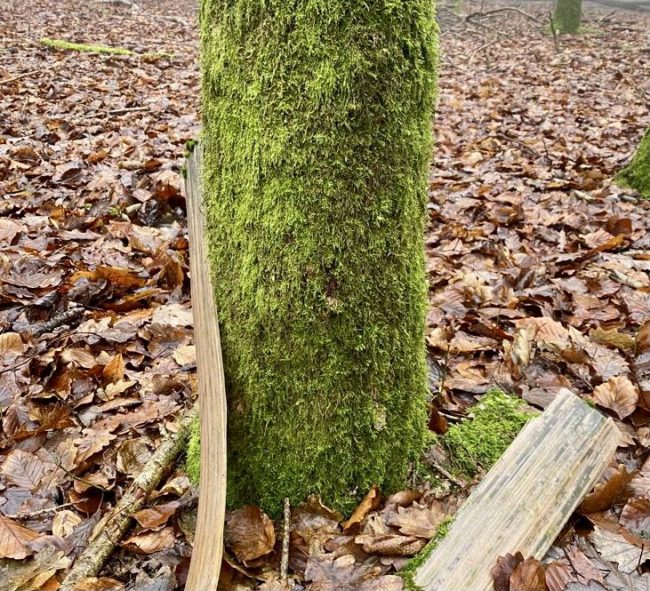
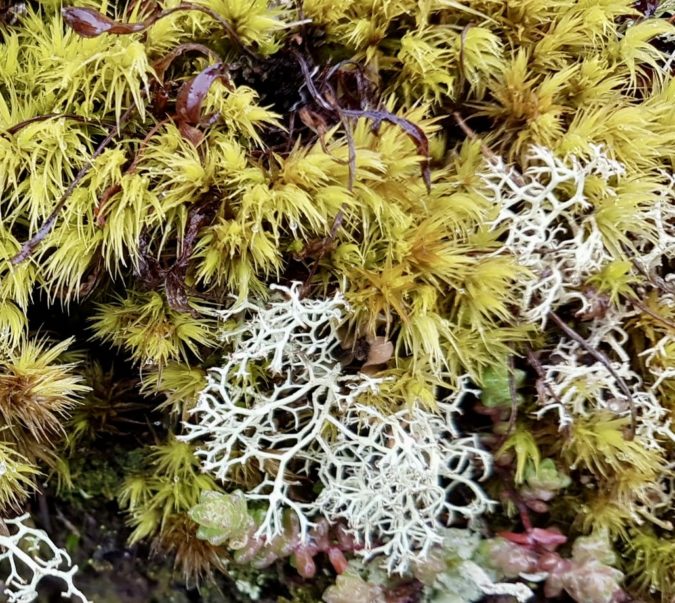
Moss (Dicranum?) growing with Lichen (Cladonia sp)
'Mossy ball', 'autumn leaves ', moss and lichen photos - thanks to Art Symons.
Comments are closed for this post.

I’ve just walked the dog and picked up a lot of lumps of moss lying on the pavement under a big old tree. Intention is to make a mini moss garden in a dish or something. There are tiny bits of lichen growing on some bits, beautiful. Five minutes home and I open your email to read this! Synchronicity.
Samantha Galliers
12 November, 2021